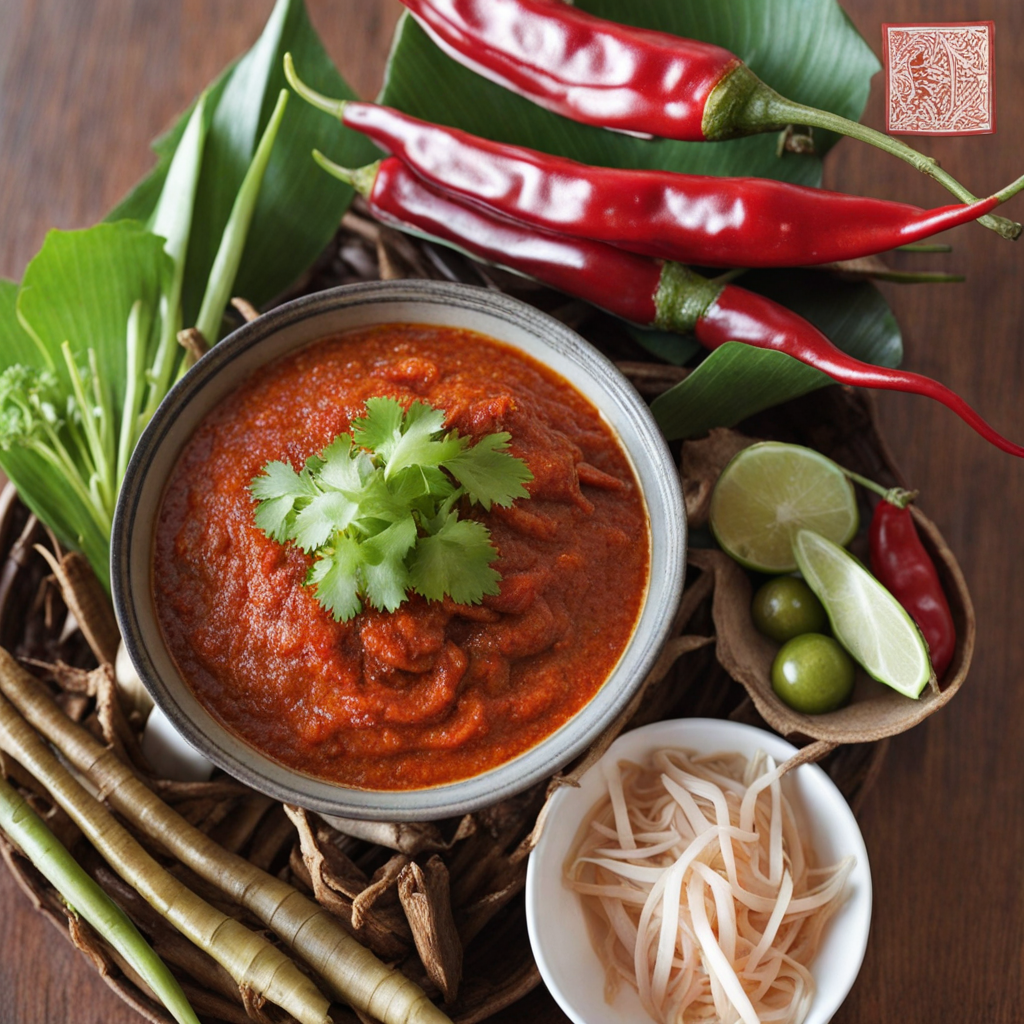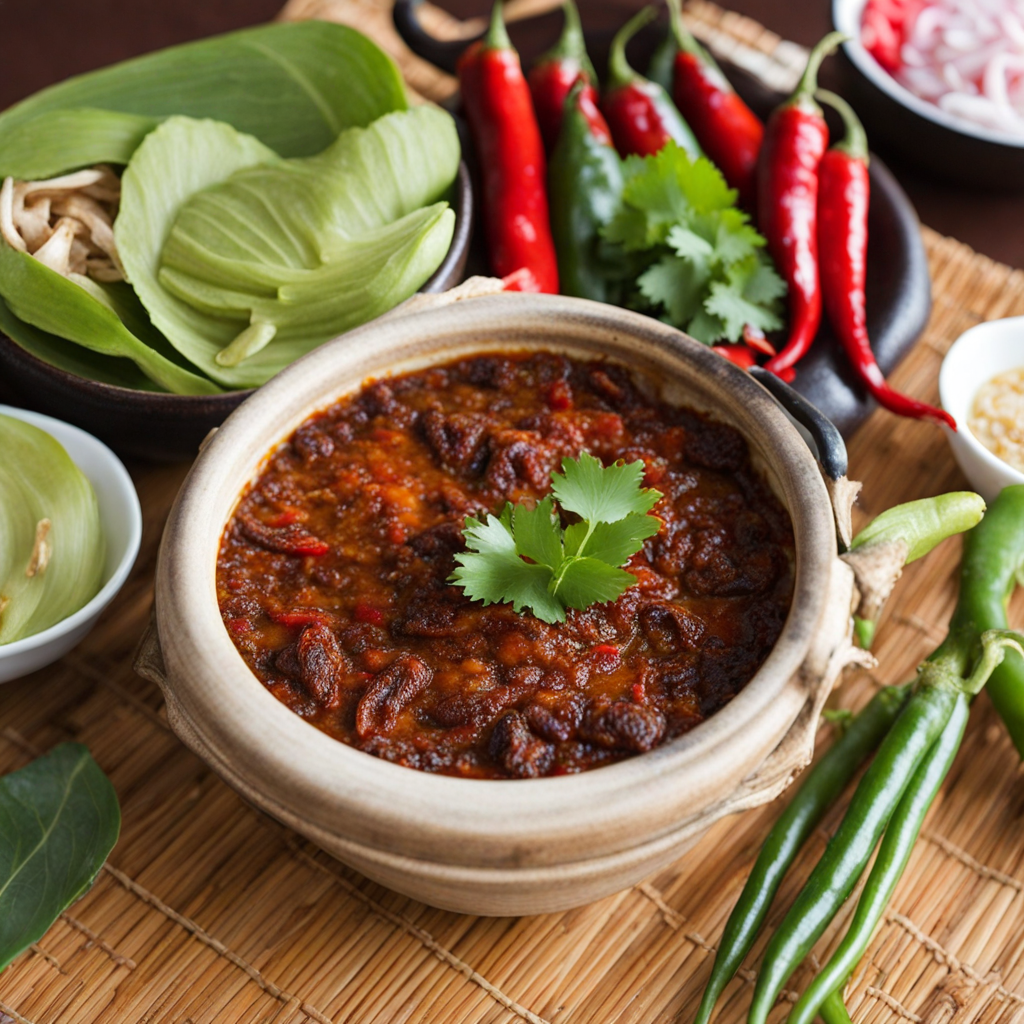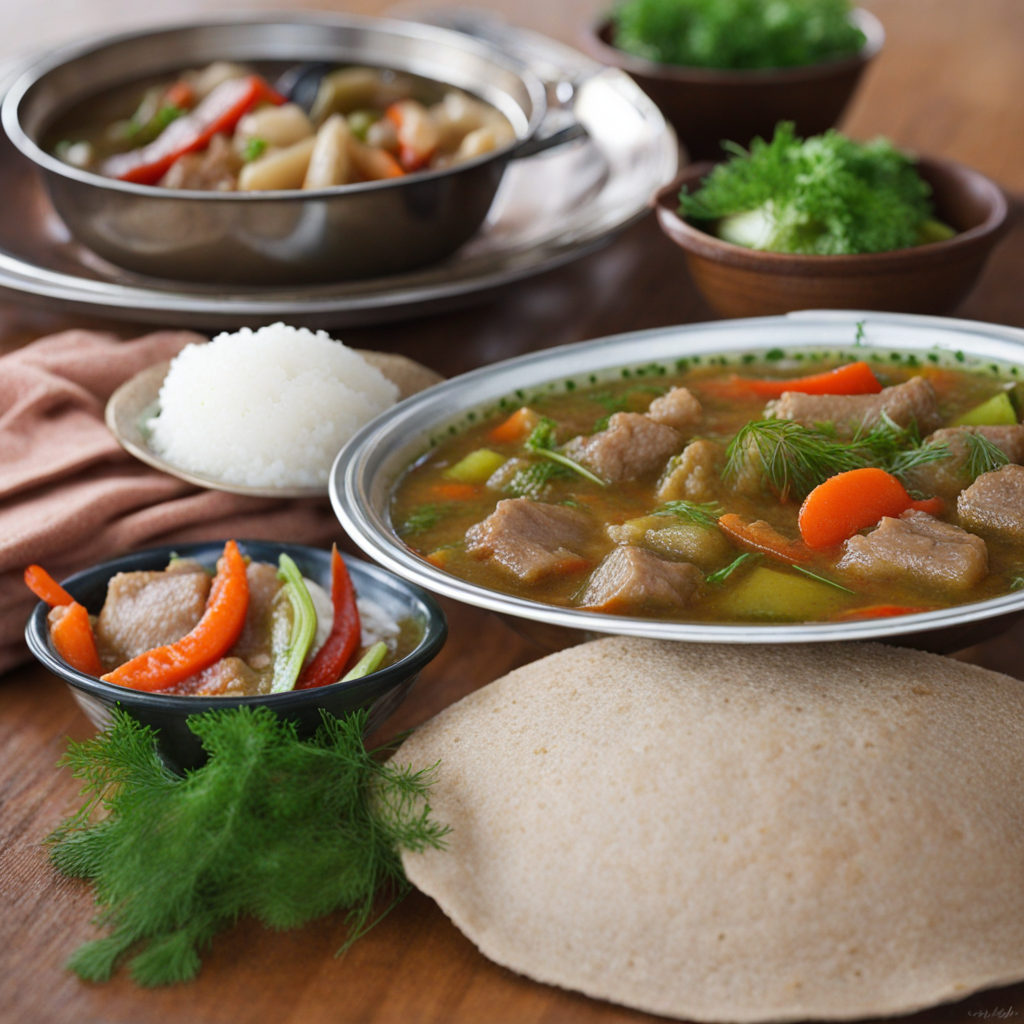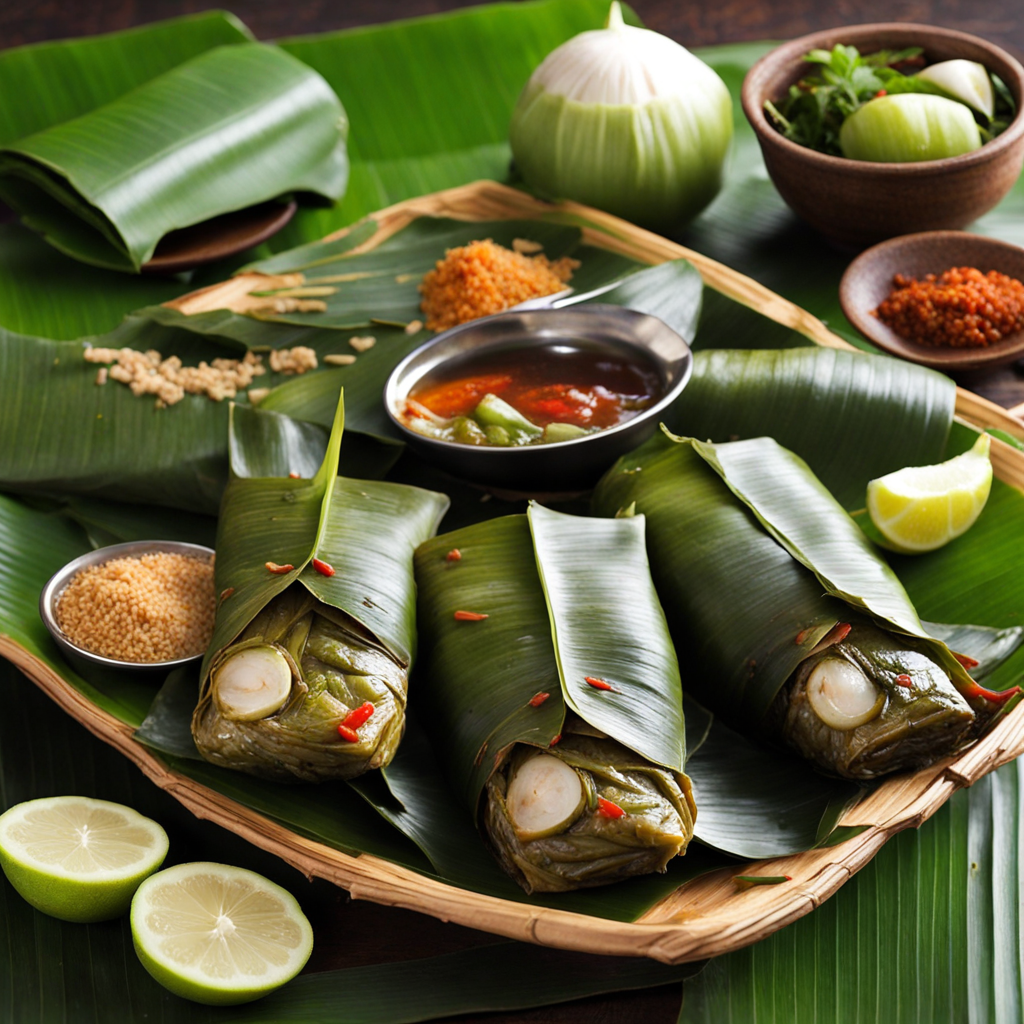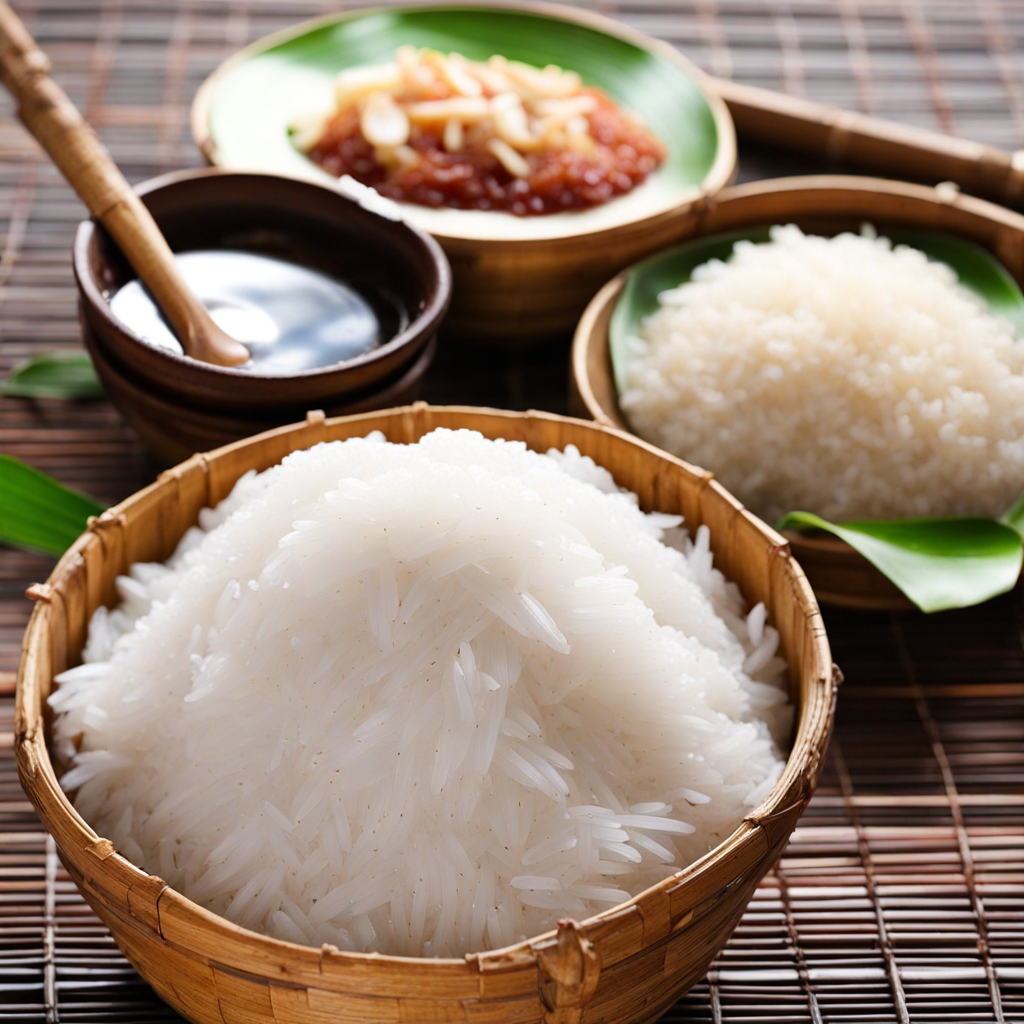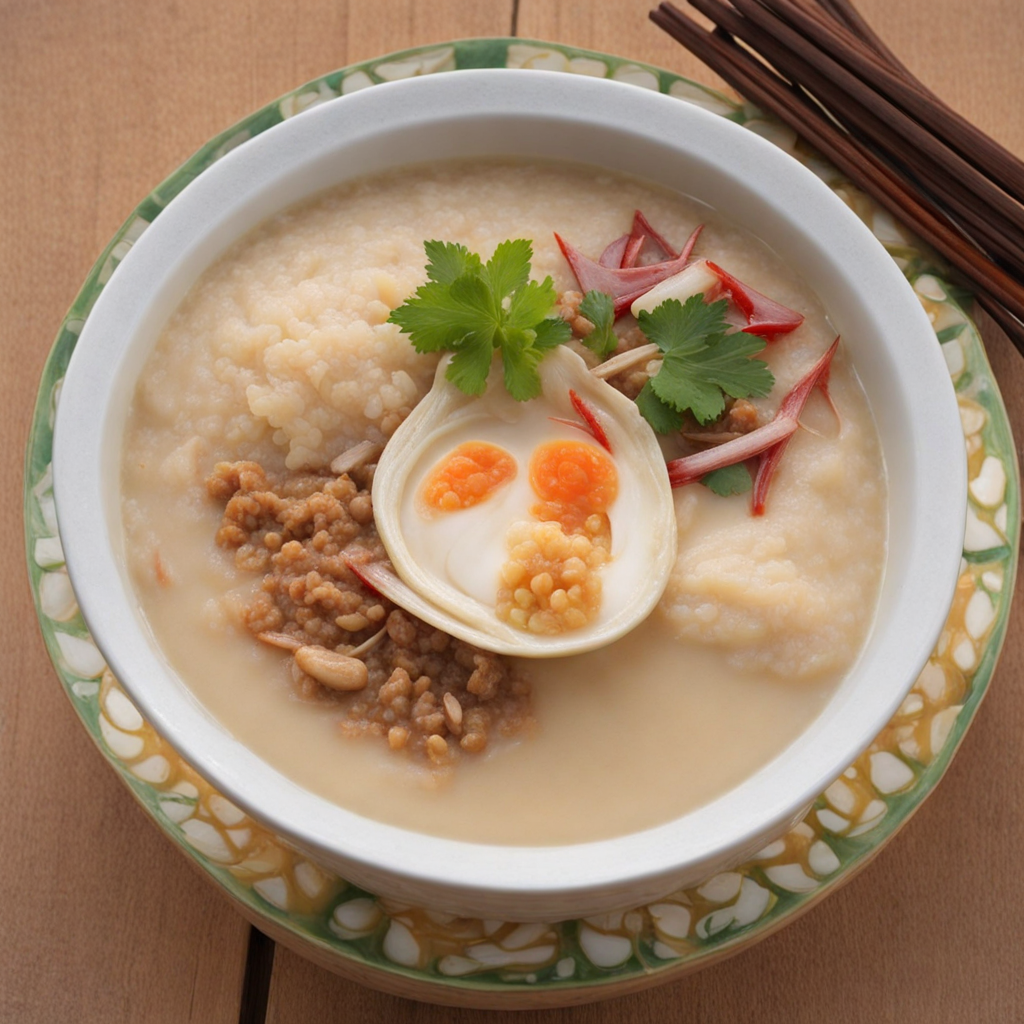Jaew Bong
Jaew Bong is a tantalizing condiment that hails from the vibrant culinary landscape of Laos, known for its bold flavors and aromatic profiles. This spicy dipping sauce is primarily made from a blend of roasted ingredients, including red chili peppers, garlic, and shallots, which are pounded together to create a rich, textured paste. The roasting process brings out the natural sweetness and smokiness of these ingredients, resulting in a complex flavor that perfectly balances heat, umami, and a touch of sweetness. The addition of fermented fish sauce adds depth, while a squeeze of lime juice brightens the overall taste, making it a delightful accompaniment to a variety of dishes. The versatility of Jaew Bong is one of its most appealing aspects; it can be paired with grilled meats, sticky rice, or even fresh vegetables, enhancing the overall dining experience. Its heat level can vary depending on the type and quantity of chilies used, allowing for customization to suit individual preferences. The sauce is not only a staple in Laotian households but also serves as a culinary ambassador, showcasing the intricate flavors that define Lao cuisine. Each bite of food dipped in Jaew Bong is an invitation to explore the rich tapestry of flavors that Laos has to offer. In addition to its delicious taste, Jaew Bong embodies the communal spirit of Laotian dining, where sharing food and flavors is a cherished tradition. The act of dipping, savoring, and enjoying food together fosters a sense of connection and celebration. Whether enjoyed at a bustling market stall or during a family gathering, Jaew Bong is more than just a sauce; it is a gateway to experiencing the warmth and hospitality of Lao culture. Discovering Jaew Bong is not merely about tasting a new flavor; it's about embracing the essence of Laos itself.
How It Became This Dish
Origin of ແຈ່ວບອງ (Jaeo Bong) ແຈ່ວບອງ, a traditional Laotian food, is a spicy dipping sauce that reflects the rich culinary heritage of Laos. The name 'ຈ່ວບອງ' translates to "spicy dip" in the Lao language, and it is often enjoyed with a variety of dishes, including grilled meats, fresh vegetables, and sticky rice. The origins of Jaeo Bong can be traced back to the diverse ethnic groups that inhabit Laos, each contributing their unique ingredients and preparation methods. Historically, the practice of making dipping sauces like Jaeo Bong is rooted in the agricultural lifestyle of the Laotian people. Rice farming and foraging for local ingredients shaped the cuisine, leading to a reliance on fresh herbs, chilies, and other locally-sourced items. The use of spices and bold flavors in Jaeo Bong showcases the influence of the surrounding regions, particularly from neighboring Thailand and Vietnam, but it remains distinctly Laotian in its composition and preparation. Cultural Significance The cultural significance of ແຈ່ວບອງ extends beyond mere sustenance; it embodies the communal spirit of Laotian dining. In Laos, meals are often shared among family and friends, with an emphasis on togetherness. The act of dipping food into Jaeo Bong promotes interaction and connection, as it encourages diners to share and enjoy each other's company. This communal aspect is crucial in Laotian culture, where food plays a central role in social gatherings and celebrations. Moreover, Jaeo Bong is often associated with festivals and special occasions. During traditional events such as Boun Pha Wet, which celebrates the life of the Buddha, and Boun That Luang, a significant Buddhist festival, this fiery dip is prepared in abundance. It symbolizes hospitality and generosity, as hosts provide a variety of dishes along with Jaeo Bong for guests to enjoy. The sauce’s ability to enhance flavors and elevate dishes makes it a staple in both everyday meals and festive banquets. Ingredients and Preparation The ingredients used in ແຈ່ວບອງ can vary significantly depending on regional preferences and personal tastes. The primary components typically include dried chilies, garlic, shallots, and fermented fish sauce (nam pla). Some variations may incorporate ingredients like lime juice, tamarind, or even roasted peanuts for added depth and texture. The blend of these ingredients creates a harmonious balance of heat, acidity, and umami, which is characteristic of Laotian cuisine. The preparation of Jaeo Bong is both an art and a science. Traditionally, the ingredients are roasted over an open flame or grilled until they achieve a smoky flavor and a slightly charred appearance. This cooking technique enhances the overall taste of the sauce, providing a unique depth that cannot be replicated through other cooking methods. Once roasted, the ingredients are pounded together using a mortar and pestle, allowing the flavors to meld beautifully. This labor-intensive process reflects the dedication of Laotian cooks, who take pride in crafting authentic and flavorful dishes. Regional Variations As with many traditional foods, ແຈ່ວບອງ has numerous regional variations throughout Laos, each showcasing the local ingredients and culinary traditions. In northern Laos, for example, the sauce may incorporate herbs like lemongrass or mint, giving it a fresh twist that complements the region's emphasis on aromatic flavors. Southern Laos, on the other hand, might favor a sweeter version, using palm sugar alongside the standard ingredients to balance the spice. The availability of ingredients also plays a significant role in the variations of Jaeo Bong. In areas where certain herbs or spices are more abundant, these local flavors are often integrated into the sauce, resulting in unique adaptations that tell the story of the land and its people. This adaptability is a testament to the resilience of Laotian cuisine, which thrives on the principle of using what is locally available to create delicious and authentic flavors. Modern Adaptations and Global Influence In recent years, the popularity of ແຈ່ວບອງ has grown beyond the borders of Laos, finding its way into international cuisine. As Laotian immigrants have settled in various countries, they have brought their culinary traditions with them, introducing dishes like Jaeo Bong to new audiences. This global influence has led to innovative adaptations, with chefs experimenting with different ingredients and techniques to cater to diverse palates. Moreover, social media and food blogs have played a pivotal role in elevating the profile of Laotian cuisine, including Jaeo Bong. Food enthusiasts and aspiring chefs are increasingly sharing their own interpretations of the sauce, often incorporating modern ingredients or fusion techniques. This exposure has sparked a curiosity about Laotian food, encouraging a new generation to explore and appreciate its flavors and traditions. Preservation of Tradition Despite the modern adaptations and global influences, the traditional preparation of ແຈ່ວບອງ remains vital to Laotian culture. Many families continue to pass down their recipes through generations, ensuring that the authenticity of the dish is preserved. Cooking classes and culinary workshops focused on Laotian cuisine are becoming more popular, allowing individuals to learn the traditional methods of making Jaeo Bong and other local dishes. These efforts are crucial in maintaining the cultural heritage associated with Jaeo Bong. As globalization continues to impact food culture, the commitment to preserving traditional recipes and preparation methods is essential in keeping the spirit of Laotian cuisine alive. Through community gatherings, festivals, and culinary education, the legacy of ແຈ່ວບອງ is celebrated, ensuring that future generations can enjoy and cherish this integral part of their culinary identity.
You may like
Discover local flavors from Laos


